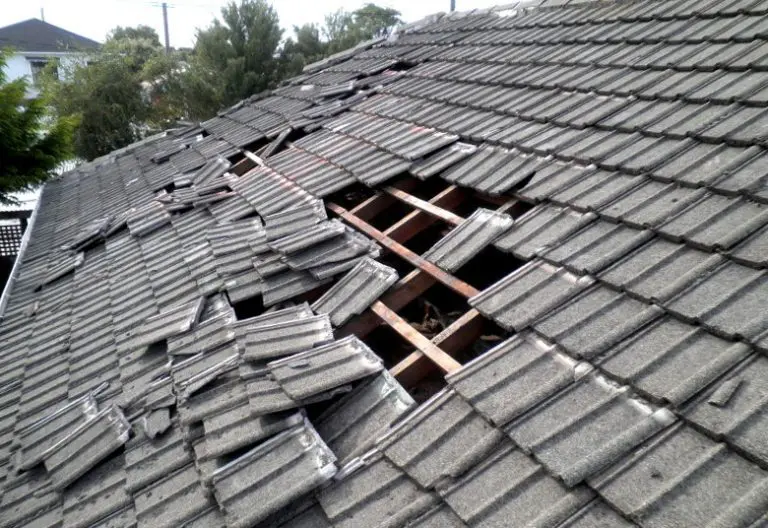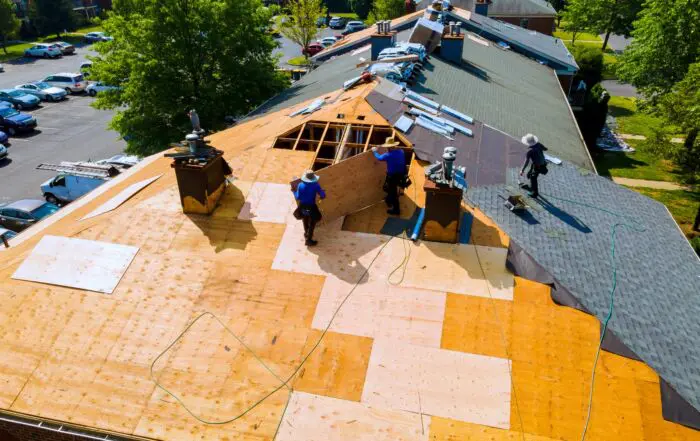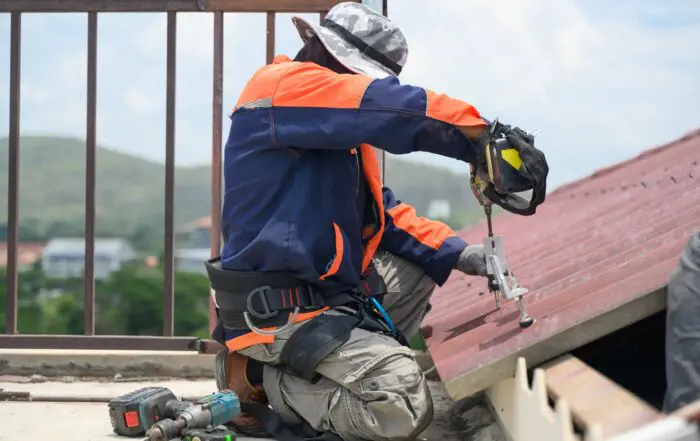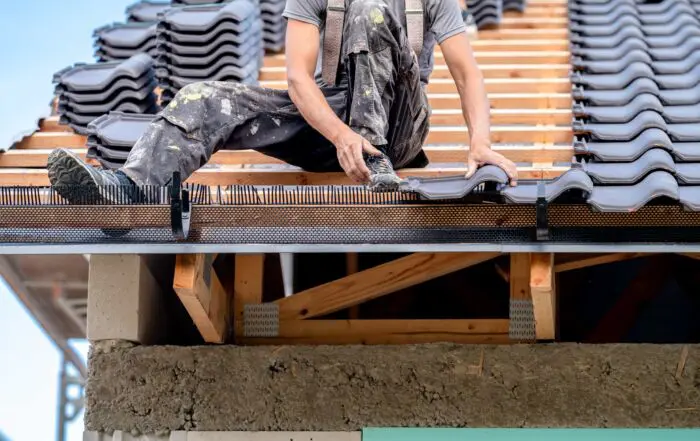
Date Posted:
April 21, 2022
Post Author:
Tim Kanak
Categories:
9 Signs of Roof Storm Damage for Miami Homeowners
Roof storm damage is one of the most common reasons why roofs age prematurely in Miami. The majority of roof damage occurs during storms. A strong wind will lift tiles, allowing rain to seep in beneath them. Even hail can cause damage to a roof by creating minor dents and holes.
While your roof can withstand most of them, there’s a need to always inspect it to ensure nothing is damaged. After a storm, wait until the weather is safe and try to look for signs of damage. Use a pair of binoculars if you can’t get a decent view. It’s not advisable to climb your roof yourself, especially when it’s wet.
In this article, we discuss 9 most common indicators of roof storm damage:
1. Shingle Granule Depletion
Over time, the granules on your shingles will wear down and become thin. There’s no need to be concerned about granule loss that’s small or hardly evident. The true risk indication is when you observe horizontal lines on it. They can appear as bare patches or cracks. These lines indicate that your shingle’s seal has broken.
2. Ceiling Discoloration
Did you notice yellowing on your ceiling after a storm? Have a roofer take a look at it. A hole in the roof could be the source of the problem, but it could also be the result of damaged flashing around a skylight or a vent.
3. Missing Shingles
When there’s a strong wind, shingles that are already damaged or peeling are at risk of blowing away. Although roof manufacturers’ warranties cover extreme winds, the projected wind speed that a roof can withstand is predicated on a brand-new, well-maintained roof.
4. Shingles Flapping in the Wind
The weather changes regularly, and there is plenty of wind all year. You should occasionally gaze up at your roof while the wind is blowing. If you notice some shingles fluttering, remember that this isn’t normal. It’s time for some maintenance.
This isn’t to say that you should always rush outside and stare at your roof every time there’s a storm. There’s a fair probability you’ll drive up while it’s windy regardless. Just take a moment to look up now and then.
5. Wet Attic Insulation
Your attic insulation is always supposed to be dry. You may have a damaged roof if you moist insulation after a storm. First, double-check that no pipes in the area have burst or have leaked. If your pipes are new or if there isn’t any pipe in your attic, you’re probably dealing with a roof leakage.
6. Check Your Gutters
Examining your gutters after a storm is an important thing you can do. This may signal roof damage if they are leaking and jammed with shingle particles or other debris (particularly tree branches). The most common sources of roof leakage are hail and wind damage. Once the leak begins, mold will soon follow. It is preferable to act sooner rather than later to resolve the issue.
Aside from leaks and obstructions in your gutters, significant storm damage, particularly hail damage, can rip parts of your gutters loose. If any part of the gutter is bending, leaking, or sagging, then it’s important to get it fixed as soon as possible.
7. Leaking Chimneys
Is water entering your fireplace? The chimney is an essential part of the roofing system. It allows smoke to escape but not water to enter. If the water is coming into your fireplace during a storm, it’s possible that the flashing surrounding the chimney may be damaged and may need replacing.
Storm damage, leading to water damage, will render the chimney unstable, and you are also likely to find mold damage over time.
8. Roof Water Damage
When your roof has been damaged by a storm, especially hail, you’re likely to notice internal indicators of water damage. You may find dark, wet spots on your walls or water spots that indicate a roof leak that occurs only when it rains.
If left unchecked, this can cause mold in the living rooms or your home, which can aggravate respiratory ailments. Invite a roofer to inspect it and fix any issues.
9. Higher Utility Bill
Most people don’t know their roof is damaged until their energy costs start to rise. A storm can cause damages that are difficult to notice, but the damage can be sufficient that you’re losing electricity. In such a case, it’s best to hire a roof repair expert to inspect, find, and fix the leakage.
In conclusion, if you notice any signs of damage on your roof, it’s important to act immediately and speak to a roofing expert. A member of our team will be more than happy to talk to you about your roof storm damage issues and schedule an inspection of your roof.




